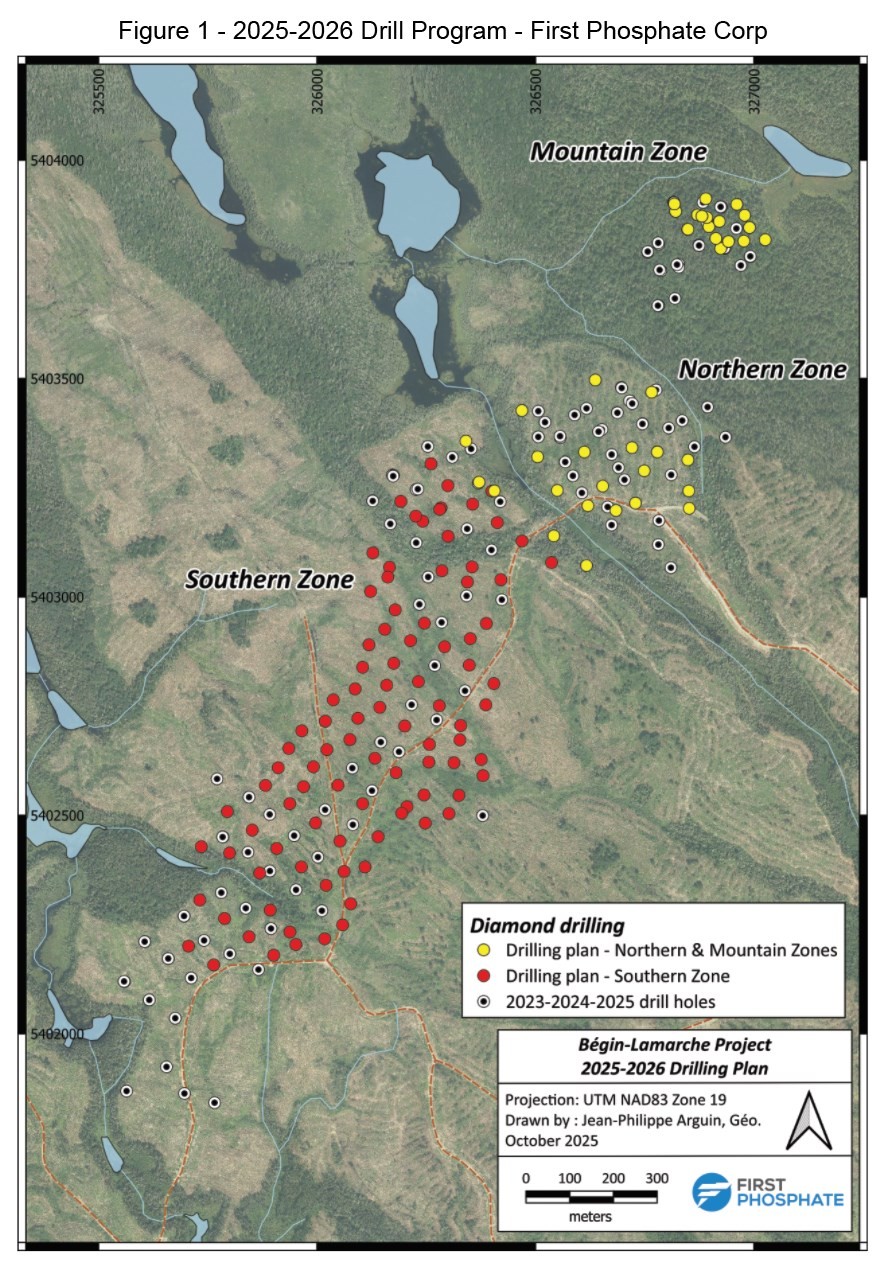Plug Into More Green Stock News
Tap into the pulse of emerging green sectors every morning. Top daily headlines from clean energy, cleantech, cannabis, and sustainable transport stocks:
Enviva Partners Reports Minimal Impact from Hurricane Ian, Provides Details on 3Q and 4Q 2022 Expectations, and Updates 2022 Guidance
Enviva Inc. (NYSE: EVA) (“Enviva,” “we,” “us,” or “our”) today reported that Hurricane Ian has resulted in minimal impact to operations and provided details on third quarter and fourth quarter of 2022 expectations, along with an update of certain 2022 financial guidance metrics.
Highlights:
- Reported that Hurricane Ian caused minimal impact to Enviva’s operations, with all employees confirmed safe
- Provided third-quarter 2022 net loss guidance range of $15 million to $10 million and adjusted EBITDA guidance range of $60 million to $65 million
- Provided fourth-quarter 2022 net income guidance range of $35 million to $50 million and adjusted EBITDA guidance range of $105 million to $120 million
- Updated full-year 2022 net loss guidance range to $55 million to $35 million, from net loss of $30 million to net income of $10 million, and narrowed adjusted EBITDA guidance range to $240 million to $260 million, from $230 million to $270 million; maintained dividend expectations of $3.62 per share
“We are very thankful that all our employees remained safe during Hurricane Ian, and I continue to be proud of how quickly and effectively our team responds to critical events like this, preparing in advance to protect our people, assets, and communities. We expect the storm to have minimal overall financial impact to our results for 2022, with disruption limited to weather-related ship loading delays at three of our deep-water marine terminals, which have since fully resumed normal operations,” said John Keppler, Chairman and CEO. “As we have described previously and as we have consistently delivered in past years, the second half of the year is our seasonally strongest period, and we are very pleased to see the third quarter shaping up to be an important step up over the second, and looking forward, we expect the fourth quarter to be a record quarter for us.”
Keppler concluded by saying, “The benefit from the constructive pricing environment for near-term deliveries and inflationary escalators within our long-term agreements, combined with a production and cost profile that seasonally improves in the second half of the year, means that we continue to stay substantially on track to deliver full-year 2022 results in line with our expectations, including leverage being below 4 times as calculated under the terms of our credit facility. As we look forward to 2023, we continue to be very well positioned for robust cash flow growth, even in an environment with potential recessionary pressures.”
Hurricane Update
Enviva prepared in advance of Hurricane Ian to keep employees safe and minimize disruption, most notably at Enviva’s storage and terminaling operations located at the ports of Savannah, Georgia, Wilmington, North Carolina, and Chesapeake, Virginia. As a precaution, the Georgia Ports Authority and the North Carolina State Ports Authority ordered the temporary closure of the Port of Savannah and Port of Wilmington, respectively, which suspended operations at our deep-water marine terminals there. The ports have re-opened and Enviva has resumed normal operations. No production facilities were adversely affected by the storm.
3Q & 4Q 2022 Expectations
$ millions, unless noted | 3Q22 |
| 4Q22 | |
Net Income (Loss) | (15.0) – (10.0) |
| 35.0 - 50.0 | |
Adjusted EBITDA | 60.0 – 65.0 |
| 105.0 - 120.0 | |
Gross Margin | 35.0 - 40.0 |
| 85.0 - 100.0 | |
| Adjusted Gross Margin per Metric Ton | $59.00 - $63.00 |
| $74.00 - $76.00 | |
Dividend per Common Share | $0.905 |
| $0.905 |
Similar to what was described in Enviva’s most recent earnings release, Enviva expects third-quarter 2022 adjusted EBITDA to be over 50% higher than reported results for second-quarter 2022, and that fourth-quarter 2022 is expected to represent over 40% of full-year 2022 adjusted EBITDA. The second half of the year is traditionally Enviva’s seasonally strongest period, as higher plant productivity is achieved through drier, warmer weather and increased asset utilization and throughput rates. Additionally, the production ramp for Enviva’s newest wood pellet production plant in Lucedale, Mississippi continues to progress in line with expectations, and we continue to see increased shipping from Enviva’s new deep-water marine terminal in Pascagoula, Mississippi.
Although diesel costs remain higher as compared to the second half of 2021, we have mitigated the impact by reducing our procurement radius and thus the freight costs associated with transporting the fiber we source from the forests to our plant locations.
As a result, adjusted gross margin per metric ton (“AGM/MT”) for the third and fourth quarters of 2022 is projected to be approximately $60.00 and $75.00, respectively, at the midpoints of the guidance ranges, representing increases of approximately 40% and 75%, respectively, from reported results for the second quarter of 2022, as we increasingly benefit from (i) cost improvements, (ii) improved pricing (including new higher-priced contracts and select repricing of legacy contracts), (iii) contract escalators for 2021 inflation now fully embedded in sales prices, and (iv) fixed cost absorption resulting from increased volumes sold. Enviva’s contracts are predominantly denominated in U.S. dollars.
In terms of pass-through costs within our contract structure, bunker fuel related to shipping is higher than prior-year periods. From an overall perspective, there is no impact to Enviva’s net results, but revenue for 2022 includes, on average, approximately $10 per metric ton (“MT”) sold related to higher bunker fuel charges passed through to our customers and, as expected, our cost of goods sold is higher by $10 per MT for the same reason. We continue to project durable margin expansion going forward, as headline contract escalators drive an outpaced increase in revenue as compared to the discrete areas of cost increase we have experienced in our cost tower.
“Given the continuing structural shortage in wood pellet supply that remains in our industry, where long-term demand continues to outstrip supply, there has never been a better time to be in this business and we are excited to be executing on our program of significant, highly accretive capacity expansions,” said Thomas Meth, President. “Our asset growth plans are supported by the highly constructive pricing environment we are in, not only for prompt delivery of cargos, but more importantly for our long-term, fixed price, take-or-pay supply contracts which durably expand the cash flow of our growing, fully contracted operations, and underpin the stable dividend we are paying. We are very excited and remain highly convicted that we will continue our track record of generating significant returns for our investors.”
Updated 2022 Guidance Outlook
Given financial expectations for the third and fourth quarters of 2022, Enviva is updating full-year 2022 financial guidance for certain metrics.
$ millions, unless noted | Updated 2022 Guidance | Previous 2022 Guidance | ||||
Net Income (Loss) | (55.0) – (35.0) | (30.0) - 10.0 | ||||
Adjusted EBITDA | 240.0 - 260.0 | 230.0 - 270.0 | ||||
DCF | 170.0 - 190.0 | 165.0 - 205.0 | ||||
| Dividend per Common Share | $3.62 | $3.62 | ||||
Total Capital Expenditures | 255.0 - 275.0 | 255.0 - 275.0 | ||||
Net income guidance for full-year 2022 has been updated to reflect revised expectations primarily related to depreciation and amortization, given increased clarity on the timing of in-service dates related to capital projects.
Adjusted EBITDA guidance expectations for full-year 2022 have been narrowed as a result of increased visibility regarding production levels, sales prices, and shipping schedules.
DCF guidance expectations for full-year 2022 have been narrowed to account for increased visibility regarding adjusted EBITDA, and higher interest rate impacts.
For full-year 2022, dividend expectations of $3.62 per share represent an increase of approximately 10% over 2021.
Total capital expenditures for 2022 continue to be estimated in the range of $255 million to $275 million, but given the current strong contracting momentum driven by global decarbonization and energy security needs, the timing of construction of our next greenfield plant in Bond, Mississippi could be accelerated, which would lead to incremental growth capital expenditures during fiscal 2022.
About Enviva
Enviva Inc. (NYSE: EVA) is the world’s largest producer of industrial wood pellets, a renewable and sustainable energy source produced by aggregating a natural resource, wood fiber, and processing it into a transportable form, wood pellets. Enviva owns and operates ten plants with a combined production capacity of approximately 6.2 million metric tons per year in Virginia, North Carolina, South Carolina, Georgia, Florida, and Mississippi, and is constructing its eleventh plant, in Epes, Alabama. The Epes plant is projected to add 1.1 million MTPY — approximately an 18% increase — to Enviva’s production capacity, and is expected to be the world’s largest wood pellet production plant once constructed. Enviva sells most of its wood pellets through long-term, take-or-pay off-take contracts with creditworthy customers in the United Kingdom, the European Union, and Japan, helping to accelerate the energy transition and to decarbonize hard-to-abate sectors like steel, cement, lime, chemicals, and aviation fuels. Enviva exports its wood pellets to global markets through its deep-water marine terminals at the Port of Chesapeake, Virginia, the Port of Wilmington, North Carolina, and the Port of Pascagoula, Mississippi, and from third-party deep-water marine terminals in Savannah, Georgia, Mobile, Alabama, and Panama City, Florida.
To learn more about Enviva, please visit our website at www.envivabiomass.com. Follow Enviva on social media @Enviva.
Non-GAAP Financial Measures
In addition to presenting our financial results in accordance with accounting principles generally accepted in the United States (“GAAP”), we use adjusted gross margin, adjusted gross margin per metric ton, adjusted EBITDA, and distributable cash flow to measure our financial performance. In addition, as a result of our Simplification Transaction, we were required to recast our historical financial results in accordance with GAAP. Accordingly, any results presented on a non-recast basis constitute a non-GAAP measure.
The preliminary adjusted EBITDA ranges for the third and fourth quarters of 2022 represent the most current information available to management and reflect estimates and assumptions. Enviva’s actual results may differ materially from these preliminary estimates due to the completion of Enviva’s financial closing procedures, final adjustments, and other developments that may arise between the date of this press release and the time that financial results for the third and fourth quarters of 2022 are finalized. The foregoing preliminary financial results have not been compiled or examined by Enviva’s independent registered public accounting firm, nor has Enviva’s independent registered public accounting firm performed any procedures with respect to this information or expressed any opinion or any form of assurance of such information.
Adjusted Gross Margin and Adjusted Gross Margin per Metric Ton
We define adjusted gross margin as gross margin excluding loss on disposal of assets, equity-based compensation and other expense, depreciation and amortization, changes in unrealized derivative instruments related to hedged items, acquisition and integration costs and other, Support Payments, and effects of COVID-19 and the war in Ukraine. We define adjusted gross margin per metric ton as adjusted gross margin per metric ton of wood pellets sold. We believe adjusted gross margin and adjusted gross margin per metric ton are meaningful measures because they compare our revenue-generating activities to our cost of goods sold for a view of profitability and performance on a total-dollar and a per-metric ton basis. Adjusted gross margin and adjusted gross margin per metric ton primarily will be affected by our ability to meet targeted production volumes and to control direct and indirect costs associated with procurement and delivery of wood fiber to our wood pellet production plants and our production and distribution of wood pellets.
Adjusted EBITDA
We define adjusted EBITDA as net income (loss) excluding depreciation and amortization, interest expense, income tax expense (benefit), early retirement of debt obligation, equity-based compensation and other expense, loss on disposal of assets, changes in unrealized derivative instruments related to hedged items, acquisition and integration costs and other, effects of COVID-19 and the war in Ukraine, and MSA Fee Waivers, and Support Payments. Adjusted EBITDA is a supplemental measure used by our management and other users of our financial statements, such as investors, commercial banks, and research analysts, to assess the financial performance of our assets without regard to financing methods or capital structure.
Distributable Cash Flow
We define distributable cash flow as adjusted EBITDA less cash income tax expenses, interest expense net of amortization of debt issuance costs, debt premium, and original issue discounts, and maintenance capital expenditures. We use distributable cash flow as a performance metric to compare our cash-generating performance from period to period and to compare the cash-generating performance for specific periods to the cash dividends (if any) that are expected to be paid to our shareholders. We do not rely on distributable cash flow as a liquidity measure.
Limitations of Non-GAAP Financial Measures
Adjusted net income (loss), adjusted gross margin, adjusted gross margin per metric ton, adjusted EBITDA, and distributable cash flow, as well as our Non-Recast Presentation are not financial measures presented in accordance with GAAP. We believe that the presentation of these non-GAAP financial measures provides useful information to investors in assessing our financial condition and results of operations. Our non-GAAP financial measures should not be considered as alternatives to the most directly comparable GAAP financial measures. Each of these non-GAAP financial measures has important limitations as an analytical tool because they exclude some, but not all, items that affect the most directly comparable GAAP financial measures. You should not consider adjusted net income (loss), adjusted gross margin, adjusted gross margin per metric ton, adjusted EBITDA, or distributable cash flow, or our Non-Recast Presentation, in isolation or as substitutes for analysis of our results as reported under GAAP.
Our definitions of these non-GAAP financial measures may not be comparable to similarly titled measures of other companies, thereby diminishing their utility.
The following table presents a reconciliation of the estimated range of adjusted EBITDA and DCF to the estimated range of net loss for Enviva for the twelve months ending December 31, 2022 (in millions):
| Twelve Months Ending | |
December 31, 2022 | ||
| Estimated net loss | $ | (55.0) - (35.0) |
Add: | ||
Depreciation and amortization | 120.0 | |
Interest expense | 60.0 | |
Income tax expense | — | |
Non-cash share-based compensation expense | 41.0 | |
Loss on disposal of assets | 9.0 | |
Changes in unrealized derivative instruments | 4.0 | |
Acquisition and integration costs | 16.7 | |
Effects of COVID-19 | 15.2 | |
Effects of the war in Ukraine | 5.1 | |
Support Payments | 24.0 | |
Estimated adjusted EBITDA | $ | 240.0 - 260.0 |
Less: |
| |
Interest expense net of amortization of debt issuance costs, debt premium, and original issue discount | 55.0 | |
Cash income tax expense | — | |
Maintenance capital expenditures | 15.0 | |
Estimated distributable cash flow | $ | 170.0 - 190.0 |
The following table presents reconciliations of the estimated ranges of adjusted EBITDA to the estimated ranges of net income (loss) for Enviva for the three months ending September 30, 2022 and December 31, 2022 (in millions):
| Three Months Ending |
| Three Months Ending | ||
September 30, 2022 | December 31, 2022 | ||||
Estimated net income (loss) | $ | (15.0) – (10.0) |
| $ | 35.0 - 50.0 |
Add: |
|
|
| ||
Depreciation and amortization | 34.0 |
| 35.0 | ||
Interest Expense | 17.0 |
| 18.0 | ||
Income tax expense | - |
| - | ||
Non-cash share-based compensation expense | 10.0 | 10.0 | |||
Loss on disposal of assets | 4.0 |
| 2.0 | ||
Changes in unrealized derivative instruments | 2.0 |
| 1.0 | ||
Acquisition and integration costs | 2.0 |
| - | ||
Effects of COVID-19 | - |
| - | ||
Effects of the war in Ukraine | - |
| - | ||
Support Payments | 6.0 |
| 4.0 | ||
Estimated adjusted EBITDA | $ | 60.0 - 65.0 |
| $ | 105.0 - 120.0 |
The following table presents reconciliations of the estimated ranges of adjusted gross margin and adjusted gross margin per metric ton to the estimated range of gross margin for Enviva for the three months ending September 30, 2022 and December 31, 2022 (in millions):
| Three Months Ending |
| Three Months Ending | ||
September 30, 2022 | December 31, 2022 | ||||
Gross margin | $ | 35.0 – 40.0 |
| $ | 85.0 - 100.0 |
Loss on disposal of assets | 4.0 |
| 2.0 | ||
Equity-based compensation and other expenses | 1.0 |
| 1.0 | ||
Depreciation and amortization | 32.0 |
| 32.0 | ||
Changes in unrealized derivative instruments | 1.0 |
| 1.0 | ||
Acquisition and integration costs and other | 1.0 |
| - | ||
Support payments | 6.0 |
| 4.0 | ||
Adjusted gross margin | $ | 80.0 - 85.0 |
| $ | 125.0 - 140.0 |
Metric tons sold, in thousands (approximate) | 1,350 |
| 1,800 | ||
Adjusted gross margin per metric ton (approximate) | $ | 60.00 |
| $ | 75.00 |
Cautionary Note Concerning Forward-Looking Statements
The information included herein and in any oral statements made in connection herewith include “forward-looking statements” within the meaning of Section 27A of the Securities Act of 1933, as amended, and Section 21E of the Securities Exchange Act of 1934, as amended. All statements, other than statements of present or historical fact included herein, regarding Enviva’s strategy, future operations, financial position, estimated revenues and losses, projected costs, prospects, plans, and objectives of management are forward-looking statements. When used herein, including any oral statements made in connection herewith, the words “could,” “should,” “will,” “may,” “believe,” “anticipate,” “intend,” “estimate,” “expect,” “project,” the negative of such terms, and other similar expressions are intended to identify forward-looking statements, although not all forward-looking statements contain such identifying words. These forward-looking statements are based on management’s current expectations and assumptions about future events and are based on currently available information as to the outcome and timing of future events. Except as otherwise required by applicable law, Enviva disclaims any duty to revise or update any forward-looking statements, all of which are expressly qualified by the statements in this section, to reflect events or circumstances after the date hereof. Enviva cautions you that these forward-looking statements are subject to risks and uncertainties, most of which are difficult to predict and many of which are beyond the control of Enviva. These risks include, but are not limited to: (i) the volume and quality of products that we are able to produce or source and sell, which could be adversely affected by, among other things, operating or technical difficulties at our wood pellet production plants or deep-water marine terminals; (ii) the prices at which we are able to sell our products; (iii) our ability to successfully negotiate, complete, and integrate acquisitions, including the associated contracts, or to realize the anticipated benefits of such acquisitions; (iv) failure of our customers, vendors, and shipping partners to pay or perform their contractual obligations to us; (v) our inability to successfully execute our project development, capacity, expansion, and new facility construction activities on time and within budget; (vi) the creditworthiness of our contract counterparties; (vii) the amount of low-cost wood fiber that we are able to procure and process, which could be adversely affected by, among other things, disruptions in supply or operating or financial difficulties suffered by our suppliers; (viii) changes in the price and availability of natural gas, coal, or other sources of energy; (ix) changes in prevailing economic and market conditions; (x) inclement or hazardous environmental conditions, including extreme precipitation, temperatures, and flooding; (xi) fires, explosions, or other accidents; (xii) changes in domestic and foreign laws and regulations (or the interpretation thereof) related to renewable or low-carbon energy, the forestry products industry, the international shipping industry, or power, heat, or combined heat and power generators; (xiii) changes in domestic and foreign tax laws and regulations affecting the taxation of our business and investors; (xiv) changes in the regulatory treatment of biomass in core and emerging markets; (xv) our inability to acquire or maintain necessary permits or rights for our production, transportation, or terminaling operations; (xvi) changes in the price and availability of transportation; (xvii) changes in foreign currency exchange or interest rates, and the failure of our hedging arrangements to effectively reduce our exposure to related risks; (xviii) risks related to our indebtedness, including the levels and maturity date of such indebtedness; (xix) our failure to maintain effective quality control systems at our wood pellet production plants and deep-water marine terminals, which could lead to the rejection of our products by our customers; (xx) changes in the quality specifications for our products that are required by our customers; (xxi) labor disputes, unionization, or similar collective actions; (xxii) our inability to hire, train, or retain qualified personnel to manage and operate our business and newly acquired assets; (xxiii) the possibility of cyber and malware attacks; (xxiv) our inability to borrow funds and access capital markets; (xxv) viral contagions or pandemic diseases, such as COVID-19; and (xxvi) overall domestic and global political and economic conditions, including the imposition of tariffs or trade or other economic sanctions, political instability or armed conflict, including the ongoing conflict in Ukraine, rising inflation levels and government efforts to reduce inflation, or a prolonged recession.
Should one or more of the risks or uncertainties described herein and in any oral statements made in connection therewith occur, or should underlying assumptions prove incorrect, actual results and plans could different materially from those expressed in any forward-looking statements. Additional information concerning these and other factors that may impact Enviva’s expectations and projections can be found in Enviva’s periodic filings with the SEC. Enviva’s SEC filings are available publicly on the SEC’s website at www.sec.gov.
To learn more about Enviva please visit our website at www.envivabiomass.com. Follow Enviva on social media @Enviva.
Plug Into More Green Stock News
Tap into the pulse of emerging green sectors every morning. Top daily headlines from clean energy, cleantech, cannabis, and sustainable transport stocks:
More Green Stock News
More Green Stock News
| Last Trade: | US$0.42 |
| Daily Volume: | 0 |
| Market Cap: | US$31.280M |
November 09, 2023 August 02, 2023 June 28, 2023 March 30, 2023 | |






